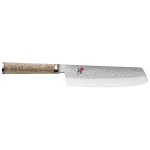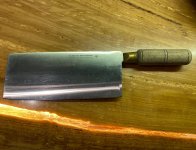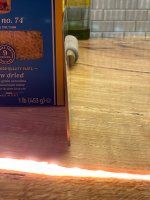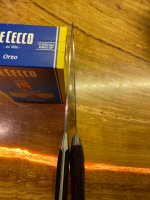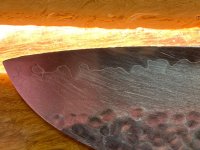hdv
Member
Biggest mistake I ever made in my life was to give away my Miyabi Birchwood knives! [eek]
[attachimg=1]
A very good friend of mine, who at the time was having a very bad period in his life, saw me using the Nakiri and wanted to try it out. After warning him about its sharpness and showing him the proper technique to hold and cut with the knife he proceeded to cut of about 5 mm of the knuckle (tissue and cartilage) of the first digit on his left index finger. He still can't bend that finger properly anymore. Weirdly though, he still fell in love with those knifes and I gave them to him. That is a couple of years ago and I still pine for those knives. Just writing this makes me think I should be buying another set in the near future. In these unsure times I am not sure about spending that kind of money on kitchen knives though. [scared]
[attachimg=1]
A very good friend of mine, who at the time was having a very bad period in his life, saw me using the Nakiri and wanted to try it out. After warning him about its sharpness and showing him the proper technique to hold and cut with the knife he proceeded to cut of about 5 mm of the knuckle (tissue and cartilage) of the first digit on his left index finger. He still can't bend that finger properly anymore. Weirdly though, he still fell in love with those knifes and I gave them to him. That is a couple of years ago and I still pine for those knives. Just writing this makes me think I should be buying another set in the near future. In these unsure times I am not sure about spending that kind of money on kitchen knives though. [scared]

